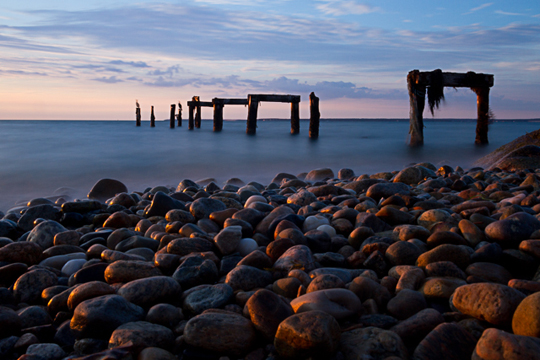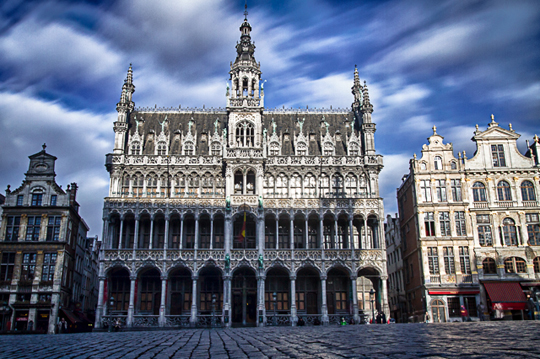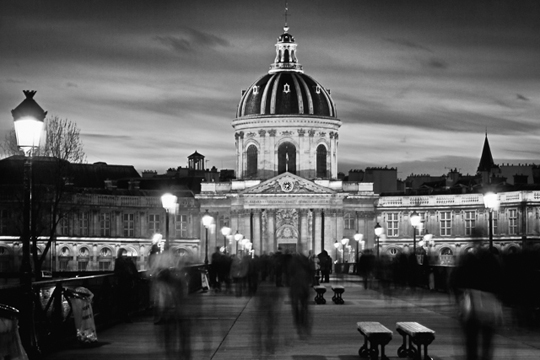
Woods Hole Dawn (Canon EOS 7D, 17mm, F/18, 30s, ISO 100, no filter, Cape Cod, 6:30AM, Sept. 1st)
Long-exposure photographs have a distinctive look, and are often elusive to achieve for beginning photographers.
But we’re here to help …
Once you start dabbling with the technique, you’ll realize that it’s relatively easy to achieve interesting results, and you’ll be exploring its possibilities more in-depth to produce truly stunning photos.
The goal of this three part article is to share my experiences and help those who want to start creating long-exposure make the right choices.
What is long-exposure photography?
Simply put, long-exposure photography is the process of shooting photos with shutter speeds below 1s. With the sensitivity of modern camera sensors, it’s very rare that such slow speeds are necessary to get a decent exposure except in extreme low-light conditions, which makes long-exposure photography a deliberate process by definition. Of course, because the amount of light that hits the sensor when exposing for so long is considerable, getting a proper balanced exposure with long-exposure photography is tricky. Otherwise everybody would be doing it!

Post-Apocalyptic Brussels (Canon EOS 7D, 20mm, F/11, 15s, ISO 800, 2 ND 64 filters stacked, Brussels, 4 :30PM, Feb. 6th)
Why would I want to do it?
By exposing your photo for longer than 1s, all the moving elements of the frame are either blurred or completely erased (depending on lighting conditions and shutter speed). This has dramatic effects on water (it freezes still bodies of water and smooths rushing water) as on Woods Hole Dawn, skies (clouds become less defined streaks of white) as on Post-Apocalyptic Brussels, trees in the wind (the trunks are sharp but the branches and leaves are blurred) and people (they are either completely erased, or become ghosts) as on Les Fantômes du Pont des Arts.
… a key component of long-exposure photography is shooting with a tripod.
Not all subjects are affected by long-exposure, so the technique predisposes you to shoot certain types of scenes where it will have a visible effect on the look.
How is it achieved?
There are two core elements to long-exposure photography: keeping the camera still, and limiting the amount of light that hits the camera sensor to maintain a good exposure if necessary.
As anyone who has shot in low-light conditions knows, shooting at speeds under 1/50 runs the risk of introducing motion blur. Really skilled shooters can go as far down as 1/15 with wide-angle lenses without blurring, but anything slower than that and you need the camera to be immobile to avoid unwanted camera shake affecting the final result. This means that a key component of long-exposure photography is shooting with a tripod. It’s the default approach to this type of photography, but there are workarounds.
A tripod gives you maximum flexibility to frame before you shoot, and ensures that the camera won’t shake. But it’s also heavy and cumbersome, and not something a casual photographer always carries around. There’s a partial solution to this, which is the beanbag. A beanbag is exactly what it sounds like, a bag partially filled with dried beans or peas. You lay the camera on it, either at ground level or on a piece of street furniture and your camera is stable and immobile. It’s nowhere near as versatile as a tripod, but it’s the one thing you can always have with you.
Limiting the amount of light that will hit the sensor can be achieved by closing the camera’s aperture, but unless you’re shooting at night, dawn or dusk, that will not be sufficient to achieve speeds slower than one second or thereabouts. The way to get even slower speeds it to use neutral density (ND) filters. An ND filter is a filter that blocks a certain amount of light coming into the lens uniformly across the surface of the lens and without altering colors.

Les Fantômes du Pont des Arts (Canon EOS 1000D, 53mm, F/11, 6s, ISO 100, no filters, Paris, 6 :50PM, Feb. 21 st)
The gear you’ll need
In order to have ample opportunities at long-exposure photography, a little bit of gear is needed. Since not everyone has deep pockets, I will look at the relative cost of various solutions when listing the necessary gear.
This article assumes that you’re using a DSLR for long-exposure photography. If you use a compact camera, most of what follows is still true and applicable, but you should know that you will be limited in what you can achieve: even high-end compact cameras tend to be limited in dynamic range, rarely allow you to use filters and rarely manage digital noise as well as a DSLR. If you’re using a film SLR, the advice here all applies but you need to be aware of reciprocity failure and how to deal with it.
1. Tripod Tripod prices range from sub 100 dollars to thousands of dollars. As with everything, you get what you pay for. Cheap tripods will allow you to do a lot of things, but might be heavier, less sturdy and limited when it comes to framing options. The main limitation I’ve seen with my first tripod was the stability of portrait shots: the weight of the camera and lens tend to pull the camera down during the shot, introducing a strange motion blur.
2. Beanbag I always carry a beanbag with me, one I made myself for less than $1. It’s made of a half-kilo of chick peas inside a couple of Ziploc bags. You can buy beanbags but expect to pay at least $30 for something that may look more stylish but won’t be any more practical.
3. Filter(s) Neutral Density filters (or NDs) come in a variety of strengths. The higher the rating, the more light gets eliminated. ND2 to ND8 filters are generally affordable (in the 10s of dollars). High quality high rating filters (like ND 400 or ND 1000) can cost a lot. Also note that circular filters don’t come in all sizes, and the larger the diameter of your lens the most likely you are to either not find the right filter or only find expensive versions. Finally note that variable ND filters exist which allow you to modulate the amount of light being cut (generally from ND2 to ND8), but they tend to create light aberrations with wide-angle lenses.
4. Remote Because you need to avoid any form of camera shake, it’s important to shoot either with a timer or a remote. A remote is not vital unless you shoot for periods longer than 30s which force you to use the bulb mode on your DSLR. That only works with a remote (because you need to both start and stop the exposure). You can use either a wire remote or a wireless remote. Both are fairly cheap (less than $20) unless you want really powerful wireless remotes.
Doing it on the cheap
The best way of shooting long-exposure on the cheap is to shoot at dawn before the sun rises or at dusk after the sun sets, and do it with a homemade beanbag. That way you don’t necessarily need any filters and you can still achieve really long exposures with a stable camera.
Ideally, to get a feel for the results, you want to do your first shoot with still or rushing water in the frame, which is the best way of seeing first hand the dramatic effects of the technique – which is exactly what we will explore in part 2 of the series.


